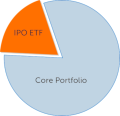The Hijacking of the IPO Market Part 2 (read Part 1 here)
The Crisis
Following the dot.com implosion at the end of 2000, the equity markets were shocked again by the exposure of corporate malfeasance by Enron, Worldcom and Tyco. Those accounting scandals resulted in the Sarbanes-Oxley Act of 2002 (SOX), which increased accounting, corporate liability and governance regulations for all public companies.
Executives of companies planning on going public complained that SOX financial and technology audits added $5 to $10 million of unnecessary expenses that were unaffordable to emerging growth companies. New punitive regulations also hurt. The Eliot Spitzer-inspired Global Settlement separating investment banking from research, wiped out small cap research, and Regulation FD, a new rule preventing selective disclosure, silenced corporate communications to investors.
During the post-dot.com/Enron period, only a few small capitalization IPOs went public. A number of large cap companies, including the Chicago Merc, Bunge and Prudential, had no problems pulling off IPOs, and all significantly outperformed.
The Government “Fix”
Congress’s “fix” was the Jumpstart Our Business Startups Act (JOBS) of 2012, which reduced financial disclosure requirements to only two fiscal years to ease auditing costs for IPO issuers, and increased the allowable number of private shareholders to 2,000 from 500. These provisions undermined the integrity of the IPO market. The JOBS Act limited valuable information available to investors on IPOs, and allowed many private companies to attain massive scale. As a result, these private companies, now called unicorns, became significant factors in the US economy without much scrutiny.
Although US IPO market issuance briefly increased in 2013 and 2014, arguably due to the Federal Reserve’s zero interest rate policy, which drove investors into equities, the IPO market drooped again in 2015. Over the last 19 years, the IPO market has never reached the average issuance that was normal from 1980 to 2000. The JOBS Act was no fix. Nothing in the JOBS Act bolstered the integrity of the public markets or encouraged IPO issuance.
Next Up
In the next article, we’ll look at how the JOBS Act distorted capital formation, hurt IPO investors, and bifurcated company valuations between public and private.
Hijack Series
Part 1: How the IPO Market Is Being Hijacked
Part 2: How Government Regulations Nearly Killed the IPO Market
Part 3: How the JOBS Act Abuses Most Public Investors
Part 4: How the IPO Market went from Dot.com to Unicorn Bubble
Part 5: Why Direct Listings Are Fake IPOs
Part 6: The Direct Listing Bailout for Unicorn Investors
Part 7: How to Promote and Protect Healthy Capital Creation
Become a Pro
Sign up for a free trial of IPO Pro.


